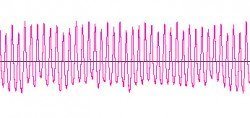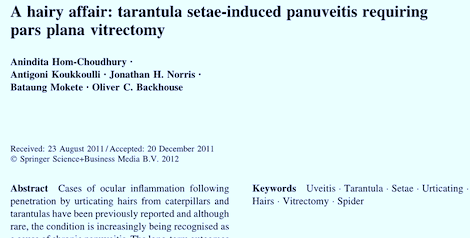Marc Abrahams's Blog, page 607
January 11, 2012
Humming in academia (part 3 [itself with, yes, 3 parts])
A partial interdisciplinary overview of some of the recent literature [this is part 3 of a 4-part series]
Entomology
Humming in Tune: Sex and Species Recognition by Mosquitoes on the Wing
"Male mosquitoes detect and locate female mosquitoes by hearing the female's flight tone, but until recently we had no idea that females also respond to male flight tones."
Astronautics
Feedback Attitude Control of Space Humming Bird
"The Space Humming Bird is an intra-vehicular free flying system (IVFFS) to be used in micro gravity environment."
Seismology
"Since the early 20th century, seismometers have detected a continuous, low-frequency seismic "hum" that is caused by wave-wave interactions in the ocean."
(concluding Improbable's partial interdisciplinary overview of some of the recent literature)

Improbable Research at ARISIA Saturday
This Saturday, January 14, ARISIA (the con for people who are going to ARISIA) in Boston will feature a special session on the Ig Nobel Prizes and Improbable Research.
WHERE & WHEN: ARISIA, Boston, Massachusetts, USA. Westin Waterfront Hotel, 425 Summer Street. Room: Lewis (3E). 2:30 pm.
WHAT: Highlights from Ig Nobel Prize winning studies and patents, presented in dramatic mini-readings by luminaries and experts (in some field). Between presentations, members of the audience will be challenged to divine the intended purpose of diagrams from certain research papers.
WITH: Marc Abrahams, Ig Nobel co-producer and stage manager David Kessler, human spotlight Jim Bredt, and others.
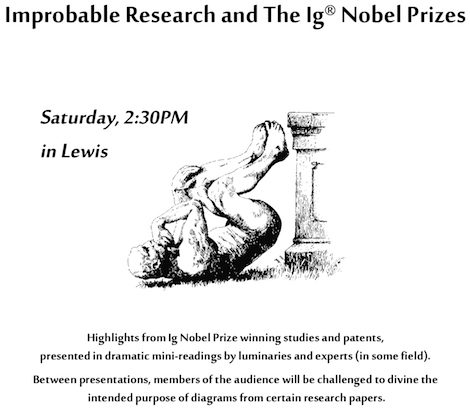

Calendar: Date for the 2012 Ig Nobel Ceremony
 We now have a confirmed date for the 22nd First Annual Ig Nobel Prize Ceremony. Because of some calendar quirks, it will be a week earlier than we usually do it.
We now have a confirmed date for the 22nd First Annual Ig Nobel Prize Ceremony. Because of some calendar quirks, it will be a week earlier than we usually do it.
The Ig Nobel Prize ceremony will happen on Thursday night, September 20, 2012, at Sanders Theatre, Harvard University. (Tickets for the ceremony will go on sale in early August.)
The Ig Informal Lectures will happen on Saturday afternoon, September 22, 2012, at MIT.
Please mark your calendars. And please spread the word!
BONUS: See our events schedule for other Ig-related events — in the next few months — in Canada, the UK, India, Denmark, Sweden, and The Netherlands.

In pursuit of Shakespeare's pursuing bear
Tom Levenson pursues the parlous question of Shakespeare's exiting bear. Levenson writes about the book Verdi's Shakespeare, by Garry Wills:
There, in the first chapter, Wills made mention of Winter's Tale, and its alpha and omega of stage directions: "Exit, pursued by bear." …
Wills tells me — laconically, first, in the body of his text, writing that "when it [Shakespeare's troupe] had a young polar bear on hand, he wrote a scene stopper…"
That was curious enough. A polar bear? In London. In 1610?
Dive into the footnotes, and it gets better:
"It used to be thought that the 'bear' was a man in costume. But scholars have now focused on the fact that two polar bear cubs were brought back from the waters off Greenland in 1609, that they were turned over to Philip Henslowe's bear collection (hard by the Globe theater), and that polar bears show up in three productions of the 1610-1611 theatrical season….Polar bears become fierce at pubescence and were relegated to bear baiting, but the cubs were apparently still trainable in their young state."
…[see Levenson's essay for further details]
BONUS: For a further — but earlier and disagreeing — look into the question, see "'Exit Pursued by a Beare': A Problem in 'The Winter's Tale'", Dennis Biggins, Shakespeare Quarterly, Vol. 13, No. 1 (Winter, 1962), pp. 3-13 1962.
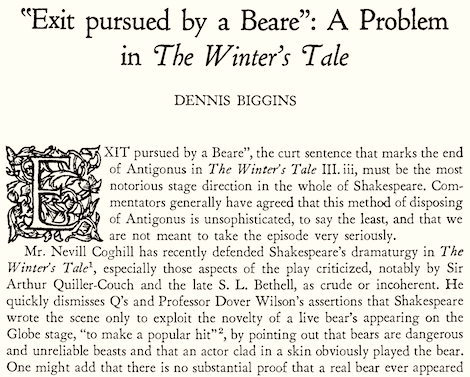

January 10, 2012
Keep your eye on the spider, and the spider off your eye
From Leeds and London comes a new medical horror story:
"A Hairy Affair: Tarantula Setae-Induced Panuveitis Requiring Pars Plana Vitrectomy," Anindita Hom-Choudhury, Antigoni Koukkoulli, Jonathan H. Norris, Bataung Mokete and Oliver C. Backhouse, International Ophthalmology, epub January 6, 2012. The authors, at University Hospital, Leed and at St. Thomas's Hospital, London, report:
"Cases of ocular inflammation following penetration by urticating hairs from caterpillars and tarantulas have been previously reported and although rare, the condition is increasingly being recognised as a cause of chronic panuveitis. The long-term outcomes and prognosis of this condition are not well known. This article describes a case of chronic panuveitis as a result of ocular penetration by tarantula setae, and its challenging management that ultimately required pars plana vitrectomy.
"Interventional case report: A 29-year-old male presented with chronic panuveitis secondary to tarantula-hair penetration. Initial management with mechanical removal of hairs from the cornea and intensive topical steroid therapy for 18 months did not adequately control his symptoms. Pars plana vitrectomy was carried out and at 6-month follow-up the patient was symptom-free without any pharmacological therapy."
(Thanks to investigator Adrian Smith for bringing this to our attention.)
BONUS: " Tarantula Hairs as Corneal Foreign Bodies", a report from Salt Lake City, in which:
A 16-year-old male presented with a 6-week history of right ocular irritation that began after letting his pet tarantula crawl on his face. Slit-lamp examination of the right eye revealed the presence of approximately 16 dark foreign bodies that had the appearance of small hairs. The foreign bodies were removed from the nasal region of the right cornea using Jewelers forceps, and the patient was prescribed a combination neomycin, polymyxin B, and dexamethasone ointment (Maxitrol®), given 4 times per day.

Comparisons: Apples, Oranges, and Apples
 Some years ago Scott Sandford, in the Annals of Improbable Research, explained how to properly, scientifically compare apples and oranges.
Some years ago Scott Sandford, in the Annals of Improbable Research, explained how to properly, scientifically compare apples and oranges.
Now, Jerry James Stone, on the Discovery web site, explains how to compare Apple products and apples (the fruit):
See the web site for more detail, including a larger version of Stone's image.

January 9, 2012
The ergonomics of wok-flipping
The Effect of Wok Size and Handle Angle on the Maximum Acceptable Weights of Wok Flipping by Male Cooks, a report in the journal Industrial Health, does more than its title reveals. It also shows how to standardise an intricate physical test.
Many professional wok-users use a big one. Almost all of those woks have a straight handle. That's bad, say Swei-Pi Wu and Cheng-Pin Ho at Huafan University, and Chin-Li Yen at National Pingtung University of Science and Technology, Taiwan.
"[We found that] a small wok [about 36 centimetres across] with an ergonomically bent handle is the optimal design, for male cooks, for the purposes of flipping."
Professional Asian cooks are prone to shoulder, neck, lower back/waist and finger/wrist aches and injuries. Wok-flipping brings some glaring risk…
So begins this week's Improbable Research column in The Guardian.
BONUS: Video of one cook's technique for flipping a wok:

Fifth editions: DSM vs. D&D
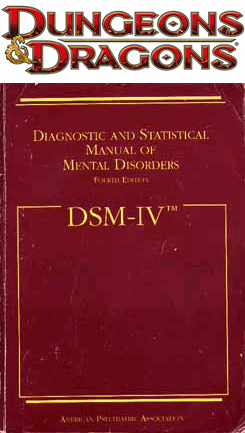 This month's Psychology Thought Experiment:
This month's Psychology Thought Experiment:
At this moment, two groups are at work, each developing the 5th edition of a tool that thousands—perhaps millions—of people rely upon:
One group is creating the 5th edition of the DSM (Diagnostic and Statistical Manual of Mental Disorders).
The other group is creating the 5th edition of D&D (Dungeons & Dragons).
Compare the thought processes of the two groups.
BONUS: Pictured here: images of the fourth edition of D&D and of the DSM.
BONUS: An unrelated work in progress: the band The Fifth Edition
BONUS (equally unrelated): The Fifth Edition sings "Workin' on a Groovy Thing:

Dr. Fish & Fish & Electro-shocking (& Mr. Fish)
 A classic study by Dr. Ray Fish [pictured here] could be of use to biologists and anyone else who plan to take a special course in electroshocking fish. Dr. Fish's report is:
A classic study by Dr. Ray Fish [pictured here] could be of use to biologists and anyone else who plan to take a special course in electroshocking fish. Dr. Fish's report is:
"Electric shock, part III: Deliberately applied electric shocks and the treatment of electric injuries," Ray Fish, Journal of Emergency Medicine, Volume 11, Issue 5, September–October 1993, pp. 599–603. Dr. Fish is at Gibson Community Hospital, Gibson City, Illinois.
The exciting new course will be held in a remarkably dry region:
"BOAT ELECTROFISHING: PRINCIPLES AND PRACTICES — Effective Use of Boat Electrofishers for Fish Capture and Minimal Trama," EOS course #BIO-408, March 20-22, 2012, Fiesta Resort Conference Center, Tempe, Arizona.
"Electrofishing is an effective way to sample freshwater fish populations. However, electrofishing may cause fish injury or mortality. Proper balance between efficient sampling and minimal harm is achieved through the knowledge of electrofishing principles and proper use techniques. This three-day course is intended to meet the National Marine Fisheries Service (NMFS) training requirements for electrofishing field staff. The NMFS guidance and training requirements document may be downloaded here.
"Intended Audience: This course is intended for biologist, field personnel, and other professionals seeking an improved understanding of the principles and techniques of electrofishing."
(Thanks to investigator Ivan Oransky for bringing this to our attention.)
BONUS (mostly unrelated): The Ray C. Fish Foundation, and the winners of the The Ray C. Fish Award for Scientific Achievement.
BONUS (even more—but not completely— unrelated): Ray Ray's Fish & Chicken

Raquel Welch (or her replacement) in your colon
New technology could both (1) improve a now-awkward medical procedure and (2) inspire a more focused re-make of a beloved science fiction movie. The Boston Globe reports:
To see inside the digestive system, doctors have to thread a scope up or down – potentially doing damage along the way – or get their patients to swallow a capsule that tumbles through, uncontrolled, snapping random pictures. Researchers at Brigham and Women's Hospital are now developing a "swimming capsule'' [pictured here] that they hope will combine the best of both approaches: the control of the endoscope with the safety and ease of a pill….
 A 1966 film called "Fantastic Voyage" starred Raquel Welch [pictured here]. IMDB sums up the movie's plot:
A 1966 film called "Fantastic Voyage" starred Raquel Welch [pictured here]. IMDB sums up the movie's plot:
A diplomat is nearly assassinated. In order to save him, a submarine is shrunken to microscopic size and injected into his blood stream with a small crew.
Rumor has it that a new version of "Fantastic Voyage" is in the works, though reports are unclear as to whether the new voyage would be primarily colonoscopic.
Here's the promotional trailer for the original movie:
BONUS: If this conjunction of technology and colon-probing strikes you as completely unthinkable, take a look at a September 29, 2009 report in The Register. The headline reads "Suicide bum-blast bombing startles Saudi prince".

Marc Abrahams's Blog
- Marc Abrahams's profile
- 14 followers


